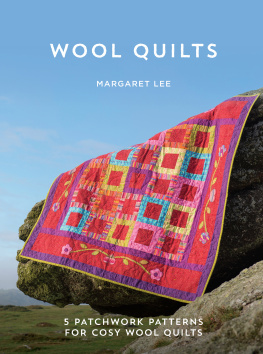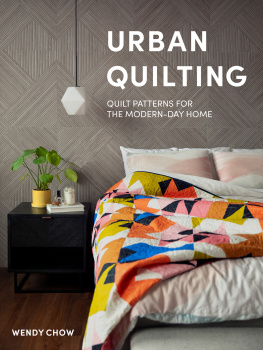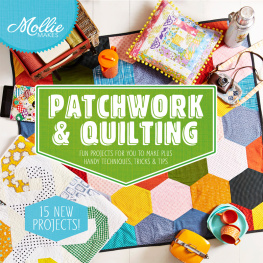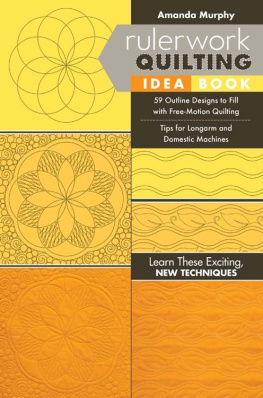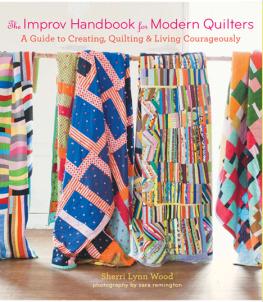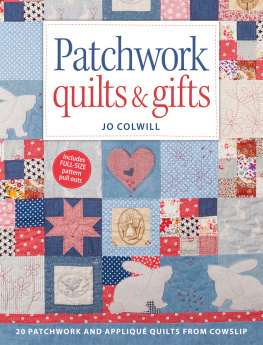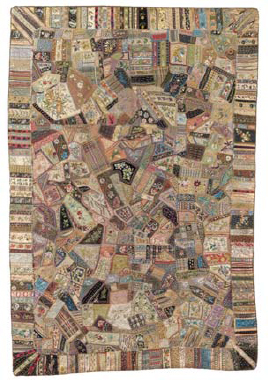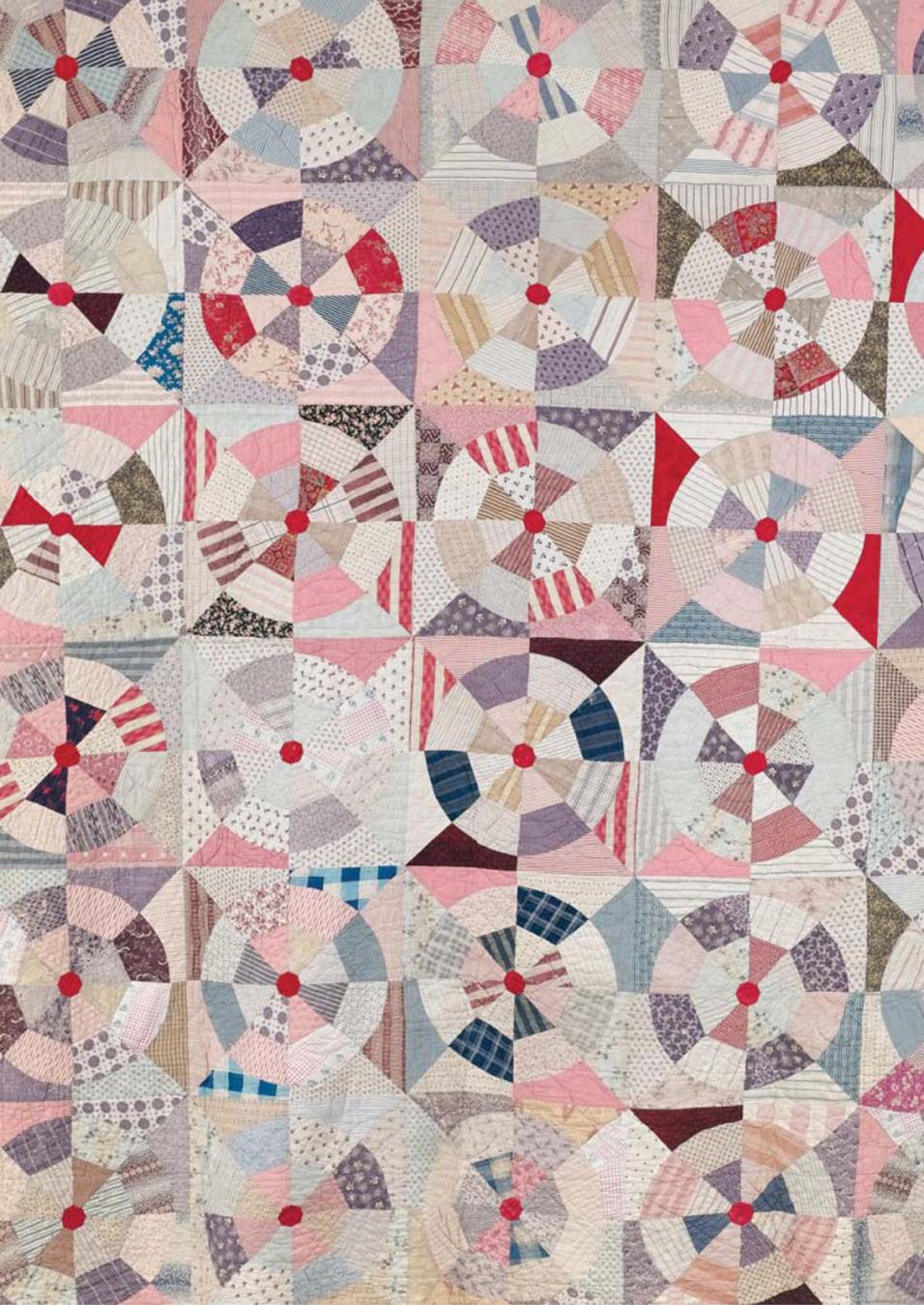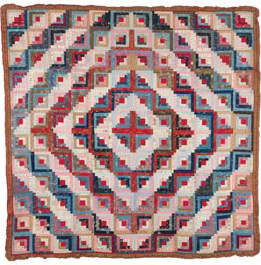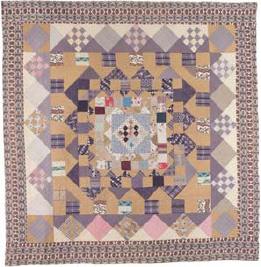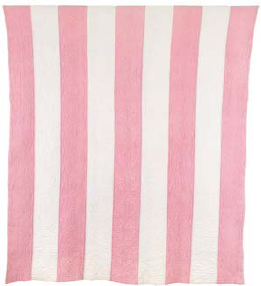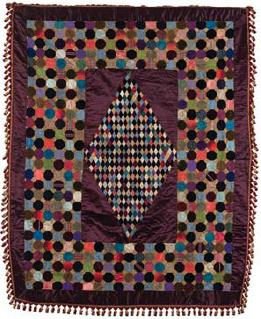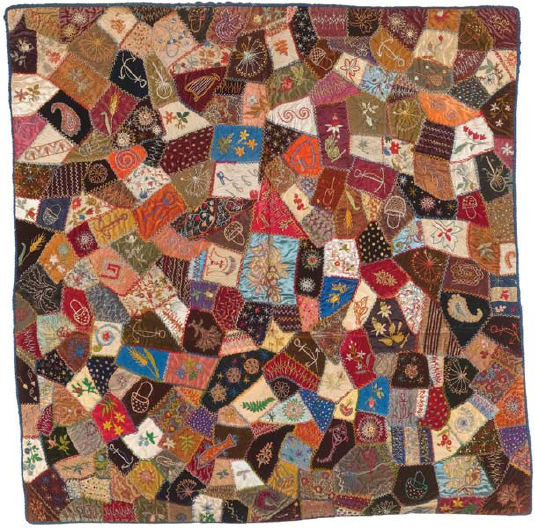PATCHWORK AND QUILTING IN BRITAIN
Heather Audin
Pawnbroker crazy coverlet, 1877, 116 x 175cm. Each piece has been heavily embroidered. It was bought from a pawnbrokers in London after the death of the original owner.
SHIRE PUBLICATIONS
Diamond mosaic patchwork coverlet, c. 1840s1860s, 224 x 267cm, accurately pieced from printed cottons. Made by Mary (Dennis) Cann or one of her daughters, who helped her run a drapers shop in Hartland after the death of her husband in 1842.
CONTENTS
Wheels patchwork quilt, late nineteenth century, 222 x 255cm. Made from roller-printed dress cottons in a wheels shape patchwork design.
INTRODUCTION
T HIS BOOK AIMS TO provide an illustrated guide to the history and development of patchwork and quilting in the British Isles from 1700 to the end of the twentieth century. It looks at techniques, styles, patterns and materials, using mainly examples from The Quilters Guild collection of historic and contemporary textiles to show the developments and changes in these crafts over the past three centuries. It is hoped that this will provide a useful visual tool and a starting point for further research into specific areas of interest in the history of patchwork and quilting.
The terms patchwork and quilting are often used together and have almost become synonymous with each other. However, they are two separate crafts, which have a linked but also distinct history of development.
A quilt consists of three layers: a top layer (which can be plain or pieced); a central warmth-giving layer (cotton, wool or blanket); and a backing. These three layers are joined together by stitches, which can be a collection of decorative motifs (flowers, leaves, feathers, hearts), a simple repetitive design (square diamonds or zigzags) or at its simplest, evenly spaced knots that join the three layers together and tie on the top of the quilt. The stitches that join the layers together are quilting. Two layers a top and a backing without central wadding make the item a coverlet. Coverlets can still have quilting stitches to join the two layers together. A single layer is called a top. As there is no other layer to join to, a top will not be quilted, and is therefore just made from patchwork or appliqu.

North Country yellow and white quilt, c. 1910, by quilt teacher Nellie Ellison, 226 x 241cm. The traditional quilt motifs of plaits, feathers and freehand scrolls have been drawn on with blue pencil, which is still visible.
Patchwork refers to a new piece of cloth that is formed by joining different and contrasting pieces of fabric together. This can be done using a variety of fabrics, by hand or machine sewing, and in a variety of methods and designs. There are numerous different patchwork designs and methods of construction. A frame design starts with a central shape which is surrounded by frames or borders of plain or pieced fabric strips. A block design such as log cabin consists of individually created square blocks of strips, which are joined together and arranged to form the overall design. Other block patterns, such as baskets and stars, use joined pieces to create each block; these are then sewn to each other to form repeating designs. Crazy patchwork is a random arrangement of different shapes applied to a foundation fabric and is often embellished to cover the seams. Mosaic patchwork is made by wrapping fabric around a paper template, tacking/basting down and oversewing/whipstitching the shapes together by hand. It is commonly made using geometric shapes, such as hexagons, octagons and diamonds.

This house block quilt, 19789, 188 x 236cm, was the first piece in The Quilters Guild collection. It was made by twenty members of the Quilt Circle who were instrumental in the formation of the Guild.
Scott log cabin coverlet, c. 1860, 179 x 182cm. The log cabin block has light and dark strips of fabric arranged around a central square. The arrangement of the individual square blocks can give a different overall effect.
Roller-printed cottons frame quilt, c. 18501900, 210 x 213cm. Frame patchwork starts with a central square or rectangle, and strips are added on all four sides to form borders or frames, which may be plain or pieced.
North Country strippy quilt (see ), c. 1920s, 216 x 243cm. Wholecloth quilts use the patterns created by quilting rather than patchwork pieced designs to create the decorative surface.
Octagon and diamond mosaic table cover, c. 18901910, 136 x 170cm. Mosaic patchwork has fabric folded around paper templates, which is then oversewn or whipstitched together by hand.
Crazy patchwork coverlet, 1886, 82.5 x 82.5cm. Crazy patchwork uses random shapes of fabric sewn to a foundation backing. Seams and raw edges are covered with decorative embroidery stitches, and embellishment can also be used within the pieces.
Appliqu can also be used with or instead of patchwork to provide a decorative design. Shapes are cut out and applied to the surface of a foundation cloth, with the raw edges turned under or covered by embroidery stitches.
Where a combination of patchwork and quilting is found together, the quilting designs can follow the shapes already provided by the patchwork or ignore them completely to form a new, unrelated design. In contrast, a wholecloth quilt, where large pieces of plain cloth form the top and bottom layers, uses the design and layout of the quilting motifs alone to produce the decorative textured surface.
It is often assumed that patchwork is a product of necessity and thrift, responding to the need to create a new piece of cloth and a practical object from any leftover scraps, or recycled from worn clothing and household furnishings that no longer serve their original purpose. Whilst this may have been true for some patchwork made by those lower down the social scale, patchwork was, at times, also created by ladies who had the leisure time and instruction to produce highly decorative pieces from fashionable fabrics. Makers would buy new fabrics especially for the purpose of patchwork, as well as incorporating their treasured scraps.



